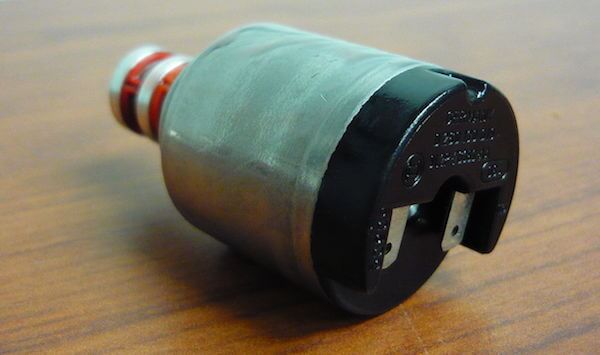
P0746 Pressure Control Solenoid A Perf / Off
Content
- OBD-II Trouble Code - P0746 - Data Sheet
- What does trouble code P0746 mean?
- What is the severity of this DTC?
- What are some symptoms of code P0746?
- What are some of the common causes for the code?
- What are some steps to troubleshoot the P0746?
- What are the standard ways to fix this code?
- How does a mechanic diagnose a P0746 code?
- Common Mistakes When Diagnosing Code P0746
- How serious is the P0746 code?
- What repairs can fix code P0746?
- Additional comments to consider regarding code P0746
- Need more help with the P0746 code?
OBD-II Trouble Code - P0746 - Data Sheet
P0746 - Pressure control solenoid A is running or stuck.
Code P0746 is generated when the PCM detects a malfunction in the electronic pressure control solenoid circuit.
What does trouble code P0746 mean?
This is a Generic Transmission Diagnostic Trouble Code (DTC) and is commonly applied to OBD-II vehicles equipped with an automatic transmission.
This may include, but is not limited to, Ford, Mercury, Lincoln, Jaguar, Chevrolet, Toyota, Nissan, Allison / Duramax, Dodge, Jeep, Honda, Acura, etc. While general, exact repair steps may vary depending on from the year. , make, model and equipment of the power unit.
When the P0746 OBD-II DTC is set, the powertrain control module (PCM) detected a problem with the transmission pressure control solenoid "A". Most automatic transmissions have at least three solenoids, which are solenoids A, B, and C. Trouble codes associated with solenoid "A" are P0745, P0746, P0747, P0748, and P0749. The code set is based on a specific fault that alerts the PCM and turns on the check engine light.
The transmission pressure control solenoid valves control fluid pressure for proper automatic transmission operation. The PCM receives an electronic signal based on the pressure inside the solenoids. The automatic transmission is controlled by belts and clutches that shift gears by applying fluid pressure to the right place at the right time. Based on signals from associated vehicle speed control devices, the PCM controls the pressure solenoids to direct fluid at the appropriate pressure to various hydraulic circuits that change the transmission ratio at the right time.
P0746 is set by the PCM when the “A” pressure control solenoid is not working properly or is stuck in the “Off” position.
Example of a transmission pressure control solenoid: 
What is the severity of this DTC?
The severity of this code usually starts at moderate, but can quickly progress to a more serious level if not corrected in a timely manner.
What are some symptoms of code P0746?
There are no established symptoms that always occur with P0746. In fact, some drivers do not report any noticeable symptoms at all. Other drivers will have to put up with the torque converter clutch not engaging/disengaging. Their ability to move can also be severely limited or even completely disabled. When the engine is idling or nearing a stop, it may stall.
Symptoms of a P0746 trouble code may include:
- The car goes into emergency mode
- Transmission slips when shifting gears
- Overheating of the transmission
- Transmission stuck in gear
- Reduced fuel economy
- Possible misfire-like symptoms
- Check Engine light is on
A number of other trouble codes are associated with P0746. These codes are related to problems with things like the torque converter clutch, shift solenoid, gear ratio, etc.
What are some of the common causes for the code?
Reasons for this P0746 transfer code may include:
- Defective pressure control solenoid
- Dirty or contaminated liquid
- Dirty or clogged transmission filter
- Defective transmission pump
- Defective transmission valve body
- Limited hydraulic passages
- Corroded or damaged connector
- Faulty or damaged wiring
- Defective PCM
- Faulty electronic pressure control solenoid
- Mechanical problems with the transmission
- Blockage inside the fuel channels of the internal transmission
- Low transmission fluid level
- Contaminated transmission fluid
- Faulty transmission control module
- Faulty PCM (although this is a very rare occurrence)
What are some steps to troubleshoot the P0746?
Before beginning the troubleshooting process for any problem, you should review the vehicle-specific Technical Service Bulletins (TSB) by year, model and transmission. In some cases, this can save you a lot of time in the long run by pointing you in the right direction. You should also check the vehicle records to check when the filter and fluid were last changed, if possible.
Checking fluid and wiring
The first step is to check the fluid level and check the condition of the fluid for contamination. Before changing the fluid, you should check the vehicle records to find out when the filter and fluid were last changed.
This is followed by a detailed visual inspection to check the condition of the wiring for obvious defects. Check connectors and connections for safety, corrosion and damage to pins. This should include all wiring and connectors to the transmission pressure control solenoids, transmission pump, and PCM. The transmission pump can be electrically or mechanically driven, depending on the configuration.
Advanced steps
Additional steps are always vehicle specific and require appropriate advanced equipment to be performed accurately. These procedures require a digital multimeter and vehicle-specific technical reference documents. You should receive specific troubleshooting instructions for your vehicle before proceeding with the advanced steps. Voltage requirements can vary greatly from vehicle model to vehicle. Fluid pressure requirements will also vary based on transmission design and configuration.
Continuity checks
Unless otherwise specified in the datasheet, normal wiring and connection readings should be 0 ohms of resistance. Continuity checks should always be performed with circuit power disconnected to avoid short circuiting the circuit and causing more damage. Resistance or no continuity indicates faulty wiring that is open or shorted and requires repair or replacement.
What are the standard ways to fix this code?
- Replacing fluid and filter
- Replace defective pressure control solenoid.
- Repair or replace a faulty transmission pump
- Repair or replace a faulty transmission valve body
- Flushing transmission for clean passages
- Cleaning connectors from corrosion
- Repair or replacement of wiring
- Flashing or replacing PCM
Possible misdiagnosis may include:
- Engine misfire problem
- Transmission pump problem
- Internal transmission problem
- Transmission problem
Hopefully the information in this article has helped point you in the right direction for solving your pressure control solenoid DTC problem. This article is for informational purposes only and specific technical data and service bulletins for your vehicle should always take priority.
How does a mechanic diagnose a P0746 code?
Your mechanic will first use an OBD-II scanner to find out which codes have been stored. They will then check for pressure in the transmission. After that, they will check the transmission fluid for signs of contamination (or that more is needed). If the fluid smells burnt, the transmission pan needs to be inspected.
Your mechanic will also want to look at all the wires that help the pressure control solenoid. Other electrical components such as connectors will also be important to check. The high pressure pump must also be tested.
Common Mistakes When Diagnosing Code P0746
While it's important to check, the high pressure pump is too often blamed for all the code and thus replaced in a hurry without proper attention to the process. Instead, faulty wiring and faulty electronic pressure control solenoids are much more likely to be responsible for code P0746. This should serve as a reminder to conduct a thorough diagnosis before proceeding with any irreversible measures.
How serious is the P0746 code?
The code doesn't necessarily mean something dangerous or a problem that will seriously damage your car if it's not fixed right away. However, as you've noticed from the above symptoms, it's entirely possible that your transmission may end up overheating or the clutch failing to engage. This can be costly and at the very least can lead to much bigger problems down the road, so it's a good idea to resolve this code as soon as possible.
What repairs can fix code P0746?
Vehicle repairs may require the following:
- Replace/repair faulty pump
- Adjust transmission fluid level
- Change contaminated transmission fluid
- Replace faulty line pressure solenoid valve.
- Repair the electrical connection to the line pressure solenoid valve circuit.
Additional comments to consider regarding code P0746
Since this code may be accompanied by a number of other codes, it is important that you deal with them in the order they were saved so that you don't miss anything.
Need more help with the P0746 code?
If you still need help with DTC P0746, post a question in the comments below this article.
NOTE. This information is provided for informational purposes only. It is not intended to be used as a repair recommendation and we are not responsible for any action you take on any vehicle. All information on this site is protected by copyright.
